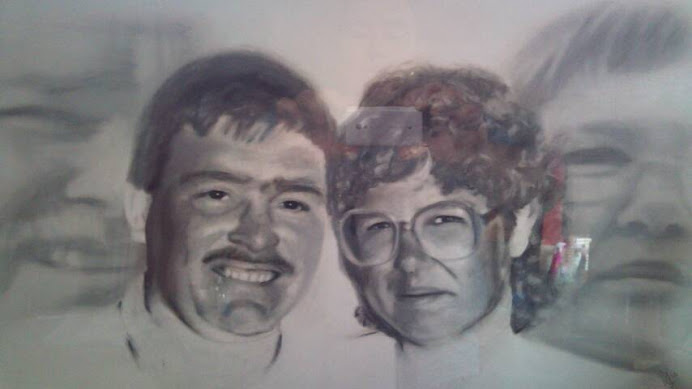Today's image using acrylic on 140 lbs acrylic paper, is inspired by JMW Turner, 'Fishermen at Sea' painted in oil on canvas in 1796. A photo reproduction of the Turner painting appears in the lovely book that I recently picked up titled 'On the Trail of Turner, in North and South Wales', CADW, 3rd Ed. 2008, 56pp.
To begin the painting I prepped my usual 9mm border edge in order to tape the paper down. Then moving away from the quite vibrant Raw Sienna, I used Cryla Yellow Ochre as a base acrylic wash coat. The Yellow Ochre was deliberately layered darker in the dark areas of the sky and sea.
Cryla Titanium White was applied using a Daler Rowney 1 inch 'Script' brush, for the moon, the highlighting on clouds, and the highlight on the sea, and for the sea birds. For the broader areas; a 1/2 inch Daler Rowney 'Graduate' Flat Wash brush was used instead of my usual (and far more expensive) 'Filbert'. You can pay a fortune for these Graduate 'student' brushes, especially if you buy in the wrong place. However, the Art Shop in Pier Street Aberystwyth sell all of the Graduate range irrelevant of size or shape for an astonishingly cheap £2.50 each. Hot Tip: some of the Graduate brushes are perfect for applying make-up! Probably only 10% of the cost of branded make-up brushes. Once the white was dry, LeFranc Louvre Black was applied with the 'Flat Wash' and plenty of water. I intend to use a retarding medium (once Pay-Day comes around), but for now, I'm happy to treat the acrylics a bit like watercolour. So using a nice wet wash the black went onto the paper and a natural sponge was used to lift off the paint and to soften the edges. Natural sponge for acrylic and watercolour is far better than a synthetic sponge. But remember to move the sponge edges making contact with the paper, so that you don't end up with a repeat pattern. On this 'Teach Yourself' acrylic course, I opted for a pot of water just for the sponge. This meant that I could immerse the sponge straight after use to remove the acrylic paint. That's another hot tip, as a natural sponge can be expensive, and you don't want to clog it up or stiffen it with acrylic paint that dries like plastic.
Next I introduced some LeFranc Louvre Deep Blue into the right hand side of the sky. Along with a purple mixture of the deep blue and Winsor & Newton 'Galeria' Vermillion into the darker parts of the sky. To further deepen the sky, I added more black onto the painting. In both cases the paint was lifted and the edges softened using the natutal sponge.






